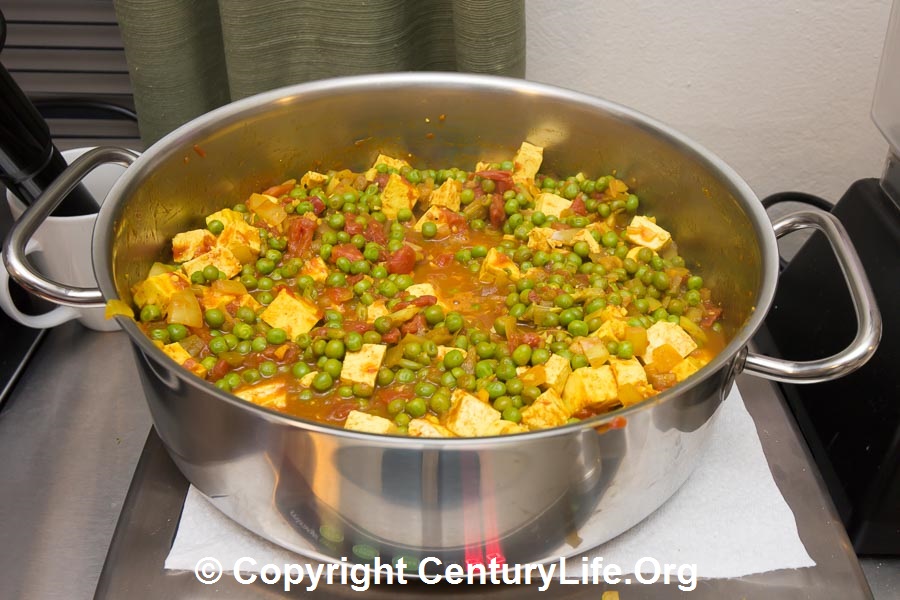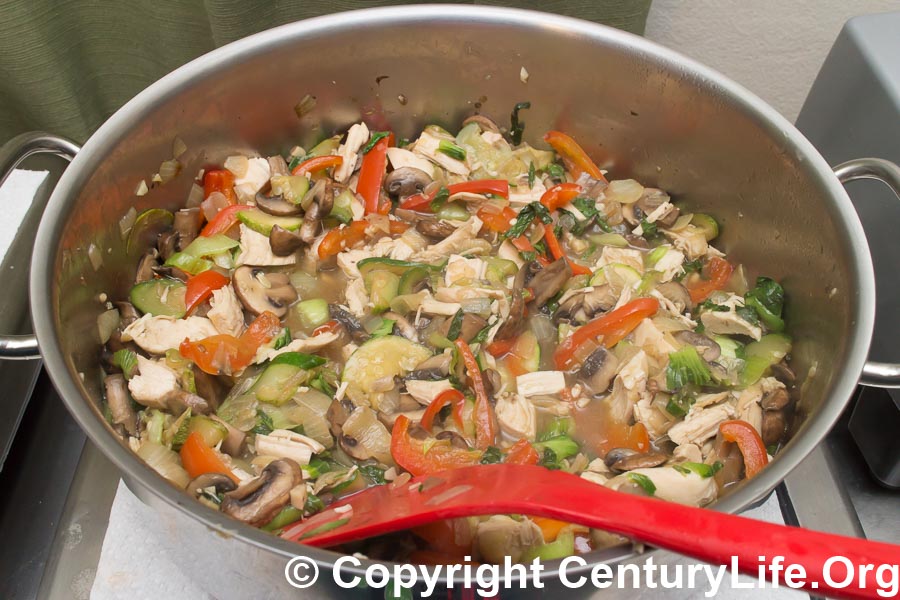
THE COMPANY
Sitram (pronounced sit-TROM) is a French kitchenware manufacturer that has served the commercial market since 1960. Sitram’s factory has been in Saint-Benoît-du-Sault, in Central France, since 1963.1 Sitram started off making pressure cookers and expanded the line. Gers Equipment purchased Sitram in 2013.
Gers Equipement, in turn, is a French kitchenware company located in the commune (equivalent to a town in the USA) of Mirande in southwestern France, in the Gers department (a department in France is like a very large county in the USA).2 Gers Equipement started in 1988.
Sitram has (editor’s note: as of 2020 Sitram Catering is discontinued) two main product lines for the USA market: Sitram Catering and Sitram Profiserie (Profiserie means “Professional Series” in French). Naturally, you might be wondering what the difference is between Sitram Catering and Sitram Profiserie. Basically Catering is more expensive, uses copper in its disc base, and has flatter, arguably more uncomfortable handles that are better for stacking multiple pieces or bracing underneath your forearm. The handles are set at a higher angle that most other consumer kitchenware, which is a plus if you are tall, doesn’t really impact you if you are average height, and could be a negative if you are short or have a stove that is set particularly high. Profiserie is cheaper, uses aluminum in its disc bases, and hollow, tubular handles.
For both types of Sitram, the aluminum or copper discs are bonded to pots and pans made out of 18/10 stainless steel. At the very bottom of all of this, a thin disc of magnetic (18/0) stainless steel is bonded to the copper or aluminum. The magnetic stainless steel makes the pan induction-compatible. The magnetic stainless steel also helps preventing bending/warping and absorbs the punishment associated with scraping a pan or pot across metal grates or sinks; copper and aluminum are much softer than stainless steel.
Sitram Catering is built like Demeyere Atlantis saute pans; both have 2 mm copper disc bases.3 Preliminarily, I can say that Catering and Profiserie perform similarly in terms of spreading heat evenly. The main difference is that the copper-based Catering should heat up and cool down a little faster in response to turning up or down burner strength, and the Catering line is not induction-compatible.
In any case, today we’re looking at Sitram Profiserie, also known as Prestige, Pro 1, or Pro1 or PPRO1 (yes, they’ve marketed it under all those names, apparently trying different ways to market it in English). In particular we’re looking at the 6.8L/7.2qt Sitram Profiserie Rondeau. (A Rondeau is basically a high-sided saute pan.) I also have other pieces in the series, the 20 cm-diameter Sitram Profiserie 4-quart half-stockpot.
Sitram’s specifications for Profiserie are inconsistent right now. You get outdated information if you look at English-language sources. If you can read French, the French website is mostly up to date but still do not confess that disc thickness actually varies by size.
I can tell you that if you buy “Profiserie” today, and you get new stock–rather than some old pan that has been collecting dust for years in a warehouse or store–then you actually get Prestige Pro 1 (PPRO1) instead. It’s basically the same thing as Profiserie, but the sizes may differ slightly on some pieces. Also, not all pieces have 5 mm thick aluminum discs bonded to the bottom; the smaller-diameter pots have visibly thinner discs.
RATINGS
Sitram Profiserie (aka PPRO1 or Prestige Pro 1) Overall Rating: 4.5/5 Excellent. For an explanation of ratings methodology, click here.
Cleanup: 4/5 Very Good. The interior finish is matte, not mirror-polished, so scratches aren’t as visible. Compared to other stainless steel pans, Sitram Profiserie is better than average in terms of stickiness and ease of cleanup, in part due to having no bumpy rivets to clean around. So I would give Sitram Profiserie a very solid 4. I never give a perfect score of 5 to stainless steel because food will stick to some extent; it’s not PTFE like Teflon. You can help minimize stickiness in several ways:
- You can pre-heat the pan with some oil to ensure that foods only encounter lubricated hot steel, which is a lot less sticky than bare, not-so-hot steel. Preheat the pan, then add oil, THEN add food. Do not put oil into a cold pan and heat them up together; it doesn’t work as well.
- You can deglaze with something as simple as water or as fine as wine; in either case, the liquid will bubble off some stuck-on bits and make for easier cleaning after dinner.
- If you do get some stuck-on bits, a brief soak and a sponge scrub usually removes such bits unless they are really burned-on, which case, use a little Bar Keepers Friend powder. (If you prefer a non-abrasive alternative, try Demeyere Non-Abrasive Cleaner
.)
Durability: 5/5 Excellent. Very sturdy. The corrosion-resistant 304 stainless steel (aka 18/10 or 18/8) vessel is 1.2 mm thick (twice as thick as most cheap disc-base cookware), making them very dent-resistant. The stay-cool handles are well-welded. Like most disc-base cookware, the bottom layer of magnetic (18/0) stainless steel makes the piece induction-compatible.
Sitram claims 1100 degrees F oven safety, well above the 500 degrees in typical residential ovens. In the unlikely case you have an oven that can heat up to 1100F, I would recommend against it. The aluminum disc softens as you approach the melting point of aluminum (about 1190F for 3003 aluminum).
As for warranties, well, it’s a good thing Profiserie is built rugged, because don’t count on Profiserie’s 2-warranty to bail you out.

Even heating: 4/5 Very Good. The top diameter is 30 cm (about 12 inches), but don’t expect to get that at the bottom. First, the sidewalls curve and then go horizontal, so the actually cooking surface is a little less than 12 inches diameter. Second, the aluminum disc base is even smaller of a circle, about 10 inches in diameter. The result is that you have about a 0.6-inch thick ring around the bottom cooking surface where the only thing between the burner and your food is 1.2 mm of stainless steel. This means that on induction/electric coil, you have a relatively cold ring. On a gas stove, you can get a scorched ring instead. If you use too high of heat, then hot gases and combustion products can float up and overheat that 0.6-inch diameter ring, because there is no aluminum to absorb that heat so those hot gases can scorch the 1.2-mm thick stainless and the oil and food above it.

In practice, most of the time you can stir food around, and if you are just searing a steak or something in the middle of the pan, then it won’t matter. However, there are times when you are cooking something that takes the entire length of the pan, or can’t be stirred, e.g., long fish fillets, pancakes, and potstickers. There are other times when stirring doesn’t work well. As an example, there is a recipe Ann likes which calls for peas, and it’s not that fun to chase little peas around the edges, trying to move them to the middle.
So I would say that the vast majority of the time, the ring of cold/hot is not a problem, but it’s annoying when it is a problem, so I’m taking off a point for that.
On the bright side, for times when you don’t need hot outer edges and you’re cooking on induction/electric coil, then you get a more evenly-heated 10-inch diameter circle. That’s because all the heat is focused on a smaller circle instead of spread out over a larger circle.
The pan has plenty of heat capacity thanks to its thick bottom layer of aluminum and total empty weight of 2770 grams (6.11 pounds). The thickness of the aluminum + steel is about 6.35 mm with the thickness of the magnetic stainless steel presumably around 1 mm thick. That means you have something like 5.35 mm thick aluminum, which is excellent. I have never had a problem with temperatures dropping too much. Pans which are too thin will drop in temperature like a rock, necessitating an awkward time period where you wait for temperatures to come back up and sort of steam the food in the interim. If you don’t have such a steep thermal dropoff, your food cooks in the ideal temperature range for longer and consequently tastes better due to Maillard reactions.
However, be aware that smaller-diameter Profiserie pieces may have thinner aluminum. For instance, my Sitram Profiserie 4-quart half-stockpot has a disc + bottom layer that is about 5.25 mm thick. The magnetic steel looks like it’s slightly thinner, too. So the half-stockpot probably has roughly 4.5 mm thick aluminum.
Handling and ease of use: 5/5 Excellent. The rondeau has an interior diameter of about 30 cm (about 12 inches), and is about 10 cm (~4 inches) tall, including the disc base. Total empty weight is about 2770 grams (6.11 pounds). I’ve handled other Profiserie pieces and am not a fan of the long, hollow, tubular handles which stay cool but are not particularly ergonomic. For pieces like this rondeau, though, the short loop handles are great. The loops are big enough that you can fit most of your hand through them even if you wear oven mitts.
Like most rondeaus, this one is shaped like a high-sided sauté pan with two short handles instead of a long handle–so you can’t “jump” the pan but can lift it up and try to toss food that way if you prefer. (I just let the pot sit and push food around with a spatula instead.)
All Profiserie pieces come with rolled rims that make drip-free pouring easy.
Value: 4/5 Very Good. See Conclusion. Also, please note that Sitram sells lids separately, so if you want lids, it will cost you extra.
Versatility: 5/5 Excellent. Broiler, oven, dishwasher, and induction-compatible. The size is large enough that you can even sear steaks in this if you wanted to; the ~3.7-inch sidewalls should be far enough away from the meat that you should not have condensation dripping down to the meat. Our Sitram has cooked pretty much everything that’s possible to cook, from fish and meat to mushrooms and even pasta.

CONCLUSION
- If you are okay with thermal discontinuities at the edges of your cooking surface but want better heat retention, I would recommend looking at Paderno World Cuisine Grand Gourmet (I review it here) instead of Sitram for frying pans or anything else that you may need heat retention for. The Padernos are made in Italy, use 7 mm thick aluminum discs and are just as rugged as the Sitrams. They don’t come with lids included–same as Sitram.
- For all other pieces, like stock pots and sauce pans, I’d rather have the Sitram Profiserie pieces because they are more responsive to heat changes due to their thinner (but still adequately thick, for even heating) aluminum disc bases, and they have flared rims for easy pouring and sizing consistent with everyone else’s. (Paderno’s stock pots and other pieces do not have flared rims, and their diameters are just a touch smaller than everyone else’s, which forces you to use Paderno-brand lids. For example, the Paderno 24 cm stock pot can’t accept any of my non-Paderno 24 cm lids. However, you can use standard-sized rims for any Paderno with flared rims, such as frying pans and paella pans.)
- If you want less of a thermal discontinuity at the edges of the cooking surface, I reviewed a comparably-sized Cuisinart Professional Series Stainless 6-quart saute pan recently which also costs a lot less and comes with a glass lid. The Cuisinart also comes with a lifetime warranty instead of Sitram’s paltry 2-year warranty, but the Cuisinart is made in China and not built as sturdily (0.6 mm thick sidewalls–half the thickness of Sitram and thus much more vulnerable to denting). The Cuisinart also sacrifices some evenness of heat in the center in order to reach out the edges; the Sitram gets to focus energy into a smaller, 10-inch circle and thus has more even heating within that circle.
- In my opinion, most home chefs should not pay too much extra for Sitram Catering over Sitram Profiserie. With Catering you get somewhat better responsiveness compared to Profiserie, but Catering is not induction-compatible in case you have an induction stove or want to futureproof. And Catering handles are set at higher angles and flat and less comfortable for many people, though if you are tall or like to brace handles underneath your forearm, the Catering handles might actually be a positive. You could split the difference by getting Catering for skillets/saute pans/saucepans, as you are more likely to benefit from the faster responsiveness (and thus better temperature control) for those pieces. Then get Profiserie for everything else.
- Sitram Profiserie (aka Prestige Pro 1 or PPRO1) and Catering pieces do not come with lids, so factor that into your budget. (If you were thinking about buying Sitram Profiserie covers… don’t. They’re pretty shoddy for the price, and the handles are terrible, tiny little metal loops that do not stay cool.) So if you don’t already have other lids that will fit, I would recommend buying a universal lid such as this one.
FOOTNOTES

